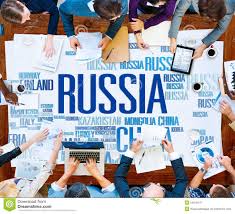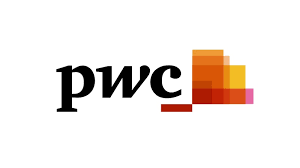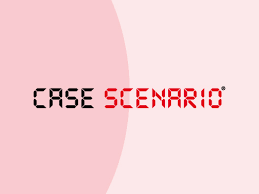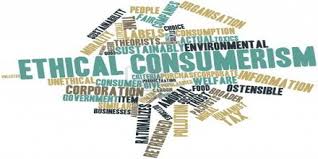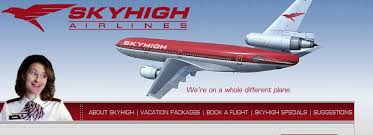
Sky High Airlines Report
Information Management Assignment: Sky High Airlines Report
Order Instructions:
The Assignment is a term paper for Logistics, Procurement and Supply chain management for Sanford university.
I need to submit it on 9 Nov 2014 and I am not a native english speaker so i need a paper that does not look plagiarized.
The total word is 1750. However, i will manage 100 words. Please use UK English Harvard business style APA 6
SAMPLE ANSWER
Information Management Assignment: Sky High Airlines Report
Introduction
Technology has become one of the strategies for attaining competitive edge in many companies. It is however important that companies carry out in-depth evaluation and analysis of technologies before adopting to overcome challenges inherent. This report provides an analysis and recommendations concerning introduction of an integrated booking system based on that of Fresh Air (South African airline) into Sky-High Airlines. The report outlines ways in which the new IT strategy will benefit Sky High Airlines. It as well identifies key challenges of Sky High Airlines transitioning to this integrated system. A detailed recommendation for effective implementation of the strategy is as well discussed.
Overview of Sky-High Airlines
The airline market share has reduced due to increased conglomerates of airlines focusing on low costs strategy. This competition has threatened Sky-High Airlines that provides luxury travel at a premium price to rethink its corporate strategy. Various options have emerged to counter the competition. Acquisition of Fresh Air by Sky-High Airlines to expand the market to South Africa is motivated by its leading booking system based upon open source technologies. The chief information officer of the company as well as CEO believes this technology is a source of competitive advantage. Some quarters such as CEO believe that the Sky-High Airlines should not adopt IT since its unnecessary expense that will cost too much money hence it should focus on traditional efficiency techniques and redundancies.
Ways new IT strategy can benefit Sky High Airlines
Significant number of research studies has linked firms’ investments in IT with overall competitive advantage as they pursue superior performance. Adoption of technologies in the operations of the companies remains an area of opportunity that Sky High Airlines need to take advantage of.
Integrating the booking system will benefit Sky High Airlines in many ways. The company will incur fewer costs in implementing the technology, as it will build on the already established open source system of Fresh Air. The fact that Fresh Air has a system in place; it will not cost a lot for the company. Furthermore, the time it will take to implement the technology will be reduced allowing the company to accrue the benefit relating to the technology (Orlikowski, 1992).
The firms’ competitive ability to create and capture value through positioning in the industry is improved. SHA stands a chance of competing favorably in the market courtesy of the technology. SHA will improve efficiency in its bookings, as customers will not have to experience delays in their bookings. The increased customer base is going to boost the profitability of the company making it compete effectively in the current market (Feller, Finnegan, Fitzgerald, & Hayes, 2008).
This integration will allow SHA to complement its previous accumulated resources, as the company will unlock its value from the existing underlying investments. This will allow the airline an opportunity to remain competitive in the market as it will accrue profits from the reduced resource utilization (Drnevich & Croson, 2013).
According to the flexibility-based theories, the firm has the ability to quickly respond to changes in an effective manner which ensures that there is improvement in the efficiency (prices minus cost). By SHA adapting to this technology it will improve in its efficiency hence the firm will minimize its costs of engaging in business. Customers will be able to use this technological platform to book their tickets easily. Flexibility will as well increase effectiveness by enabling them to seize every opportunity that will help it accrue extra ordinary profits. Through this booking system, customers will be able to make enquiry easily and well as follow up, on their progress without necessarily having to appear at the airplane physical premises
Key challenges of Sky High Airlines transitioning to an integrated system
Even though the company will accrue some benefits as a result of transitioning to an integrated system, there are a number of challenges the airline will encounter.
One of the challenges is resistant to change. Various stakeholders hold varied opinions about adapting to this new technology. For instance, the CEO is not supporting this technology because of fear of increased cost. Such resistant will impact on the transitioning making the process long.
Another key challenge is selecting the most appropriate system that will better meet the expectations of the company. There are various software packages available in the market that the company can adopt (Feller, Finnegan, Fitzgerald, & Hayes, 2008). The two options to choose from is packaged and open sources software. Packaged software offers rich propositions in terms of broad and diffuse implications and in generation of energy. Such software are selected through a linear model of activities that includes identifying the user needs, evaluation of software on the basis of needs and then selecting the most suitable package. Open source software on the other hand are produced/created by a consortium of experts and are not sold these two options have their advantages as well as drawbacks and therefore, it would require the company to agree on the best modality something that may take quite some time delaying the process of transitioning (Samoladas, et al., 2012). The users at their own wish use free/open source software; they can copy and redistribute the software and can as well modify it to suit their own use.
Recommendations on effective implementation of the strategy
Implementing the strategy in the correct way will ensure that it succeeds. This however will require SHA to take adapt to appropriate strategy.
The company will have to create a conducive environment whereby all the stakeholders agree and support the integration process. A section of the stakeholders has indicated some resistance and this is likely to be an impediment. To avoid such, they should be made to understand the benefit of integrating to the new system through practical demonstrations on how the system works (Drnevich & Croson, 2013). They should as well be convinced through examples of the companies that have embraced the technology and how it is working for them. This will help to increase the level of resistance.
It is also recommended that the company carry out a SWOT analysis about packaged and free open source software to adapt to before making an appropriate decision. Even though open sources software is preferred, its strength, weaknesses, and threats and opportunities must be highlighted and assessed. This will ensure that the best decision is reached making the process of implementation easy and successful.
To implement the project well, it requires that the company come up with a defined process of strategic systems integration planning (SSIP) that will provide basis on the successful integration of the new technology. This is a cost-effective approach that allows better decisions making and improve the productivity of the system. Once SSIP process is in place, it is then easier for the company to implement and integrate new IT the deliverables as they are easily defined, resources and assigned (ArcView Associates, LLC, 2009).
The first step is managing the SSIP and organizational change. This is the initial step but continues in the other phases and if well deployed it continues throughout the life of an enterprise. At the start, the scope, work plans, tracking and reporting of the program are established to manage the introduction of the SSIP to gain executive-level support and commitment. It is also important to define the project team for the initial SSIP phase. The team will be required to carry out various functions such as to manage the project, manage the process change and organizational change and ensure commitment through organization communication and executive communications. In SHA, the combined team of IT from all the branches of the airline, business representatives and customers must have insight in the business process (ArcView Associates, LLC, 2009).
The second phase is assessment of the current IT and business environments. The teams will review the current IT environment and business environment. They must engage leaders to understand the business direction, competitive situation, industry trends, and customer segments. To have a clear understanding of what the future has in store for the technology.
Internal IT environment require assessment including the data center telecommunications infrastructure, physical system architecture and infrastructure, deployed systems, applications users, application interfaces, and development process, access security, QA and test processes, databases and IT organization and management function among many others (ArcView Associates, LLC, 2009).
The industry trends should as well be assessed with attention focus to those that could affect current environment. The company is also required to consider and assess the IT solutions for their competitors. This will ensure that it avoids technology that is not going to be productive to their company.
The third phase is identification of opportunities and issue. Appropriate methodology should be adopted to develop process models may include high-level views and detailed data flow diagrams among many others (Basahel & Irani, 2009). Functional areas, process, functions, and inert process relationships should be defined. The model will be used in identifying the areas with gaps and to assess the maturity level of the new technology.
The fourth phase is development of an IT strategic plan that will provide an IT strategic direction (ArcView Associates, LLC, 2009). The plan with include application architecture, information architecture. IT team organizational structure and resources as well as technology strategy. The strategic vision is defined then reviewed and strategic options assessed putting into consideration the IT objectives, resource requirements limitations and business priorities of SHA .
The last phase is development of an IT tactical plan that will help in supporting the implementation of this technology (ArcView Associates, LLC, 2009). Various issues that could be an obstacle from IT, perspective or business are deliberated and amicable solution provided. Capacity of the SHA to accommodate this changes in process and business in IT facility while it serves its customers and operated effectively are considers and deliberated on. Other issues that SHA would assess include, impact of external entities, whether deliverables and priorities will be redefined, financial trade off, improved business processes and competitive level among others.
The development plan should illustrate the overall costs, benefits risks and impacts. It should as well show the alternatives of deployment considered and provide schedule for the required developments projects and migrations. By adhering to these recommendations, integration process will be smooth and SHA will be able to achieve its plans.
Marketing opportunities
The airline has an opportunity to expand and accrue higher prices through marketing initiatives. To ensure that the company remains competitive in the market, it should adopt the following strategies. One is use the internet to market its services, second is to improve its services to attract more customers and lastly is for the company to increase its adverts on traditional media such as television, radio and print media. Internet has become widespread and many potential customers will be able to access to the company services through platforms such as social media, blogs and twitter among others. Improvement of services provided is yet another important market strategy that will help the company attract more customers who require value for their money. Using traditional media such as TV and radio will as well increase information supply in the public domain triggering increase in number of customers. These marketing ideas rhyme with the goals and future objectives of the organization of remaining competitive in the market. The company, through these marketing strategies will capture huge market base making it achieve economies of scale that will enable it gain a competitive edge. Increased number of customers’ presents an opportunity to the company to increase its branches and improve its services. It will be able to provide better services to the customers and carry out a growth strategy by expanding in other areas.
Assignment Brief Part B
Before handling this assignment, my knowledge on open source software was limited. I could not imagine that various software were available free of charge on the internet. As a business oriented individual, it is important to seek for more information pertaining to the requirements to start a business. This information is accessible through various platforms on the internet. Some of these sources are credible and provide in depth information on the best strategies, technologies, or networks to adopt in doing a business.
In any business, it is required that people innovate and use their skills and knowledge well to impact positively on their business. Regardless of the fact that open source software is available, it is not always that this software will work in an entity. It is therefore important to evaluate the organization needs and capability before adopting such software.
Through this assignment, I must attest to the fact that my level of knowledge about open source software has increased. I can now operate and even manage a company IT system smoothly to help it in attainment of their goals and objectives.
I have identified various issues that pertain to this assignment. One is that, it is possible to get grants and assistance to help already existing businesses to innovate and grow to achieve their success. This is an opportunity that many people lacks and if they can get such assistance, it is likely to improve the kind of software they adopt. It is also important for business to seek for advices and support to enable them engage in their businesses well. This support and advice widens the scope of thinking of the people in the business and as well may impact on technology.
References
ArcView Associates, LLC. (2009). Strategic systems integration planning.
Basahel, A., & Irani, Z. (2009). Evaluation of strategic information systems planning (SISP) techniques: Driver perspective, European and Mediterranean conference on information systems, Crowne Plaza Hotel.
Drnevich, P., & Croson, D. (2013). Information technology and business-level strategy: toward an integrated theoretical perspective. MIS Quarterly, 37(2): 483-509.
Feller, J., Finnegan, p., Fitzgerald, B., Hayes, J. (2008). From peer production to productization: A study of socially enabled business exchanges in open source service networks, Information systems research, 19(4): 475-493.
Orlikowski, W. (1992). The duality of technology: Rethinking the concept of technology in organizations, Organization Science, 3(3): 398-427.
Samoladas, I et al., (2012). Exploring the quality of free/open source software: A case study on an ERP/CRM system. Department of Informatics, Aristotle University
We can write this or a similar paper for you! Simply fill the order form!




